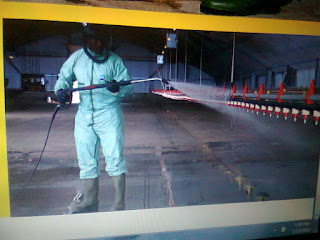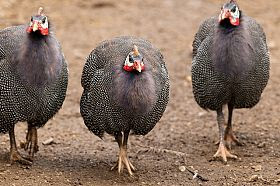Animal identification is also a planning tool that will provide into on different animals in the state,number and location. This will help policy makers to plan for vaccination project and other preventive protocols in animals.
It has been documented that 75% of diseases affecting humans are caused by animals, so if the health status of the animals are top priority ,then we can prevent a lot of diseases in man.
The animal kingdom has a lot to offer the human race ,in terms of food, clothing, medicine, research opportunities, foreign exchange and new improved genetic strains and breeds that can eliminate unwanted traits in certain species.
There is a fortune to be made from animal husbandry but management of such projects deny us the expected rewards.
Animal identification benefits for animal health and food safety.
Animal/pet identification project: if farmer has his farm registered, the animals on the farm are tagged/ pooled in a data base. This information is stored , the location of the farm is noted using google earth or the simple G.P.S . Activities on the farm are monitored by vets and of course the farm is insured.
All products from the farm can be traced up to the market,and all food safety procedures adhered to, and documented. This process alone will give a data base of producers in the country.
The proper management on farms will be ensured , tracing of products from farms are possible. This will be of importance if there is a problem that mandates a recall of product for investigation.
The way to achieve the purpose of wealth creation from agribusiness venture is to have a data base that shows location, tracks supplies and distribution channels..
It has been documented that 75% of diseases affecting humans are caused by animals, so if the health status of the animals are top priority ,then we can prevent a lot of diseases in man.
The animal kingdom has a lot to offer the human race ,in terms of food, clothing, medicine, research opportunities, foreign exchange and new improved genetic strains and breeds that can eliminate unwanted traits in certain species.
There is a fortune to be made from animal husbandry but management of such projects deny us the expected rewards.
Animal identification benefits for animal health and food safety.
Animal/pet identification project: if farmer has his farm registered, the animals on the farm are tagged/ pooled in a data base. This information is stored , the location of the farm is noted using google earth or the simple G.P.S . Activities on the farm are monitored by vets and of course the farm is insured.
All products from the farm can be traced up to the market,and all food safety procedures adhered to, and documented. This process alone will give a data base of producers in the country.
The proper management on farms will be ensured , tracing of products from farms are possible. This will be of importance if there is a problem that mandates a recall of product for investigation.
The way to achieve the purpose of wealth creation from agribusiness venture is to have a data base that shows location, tracks supplies and distribution channels..



















